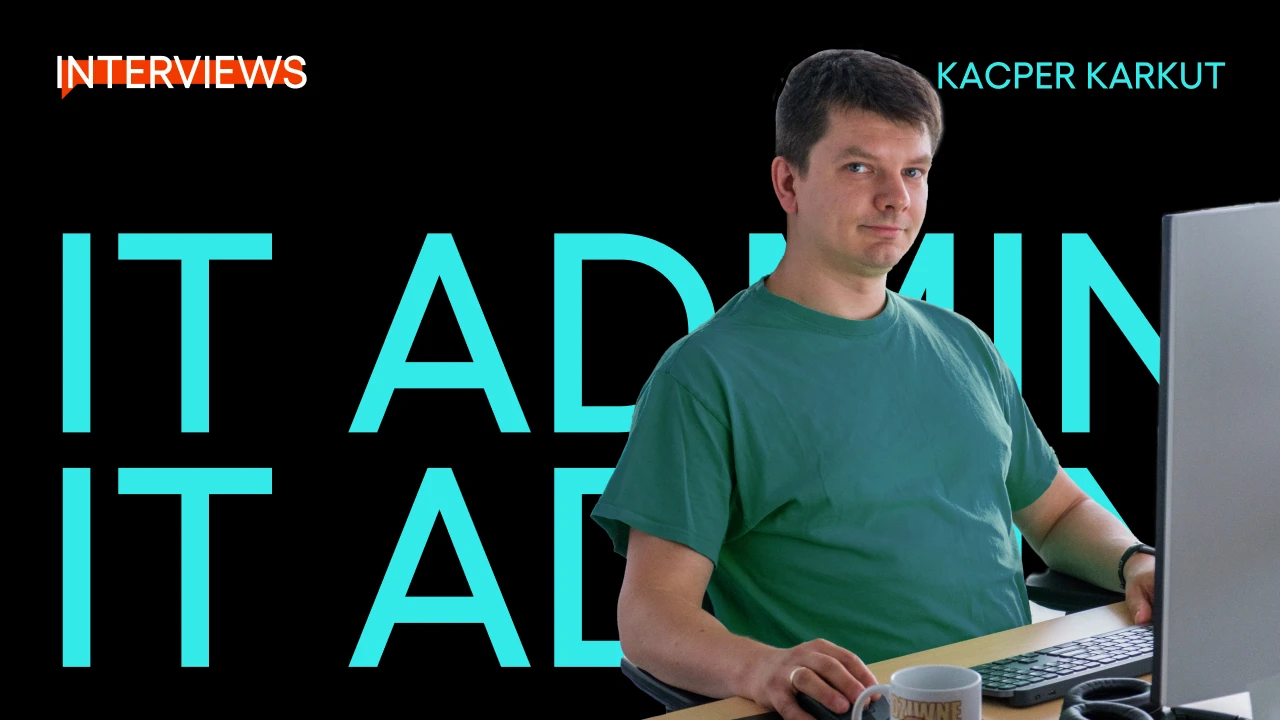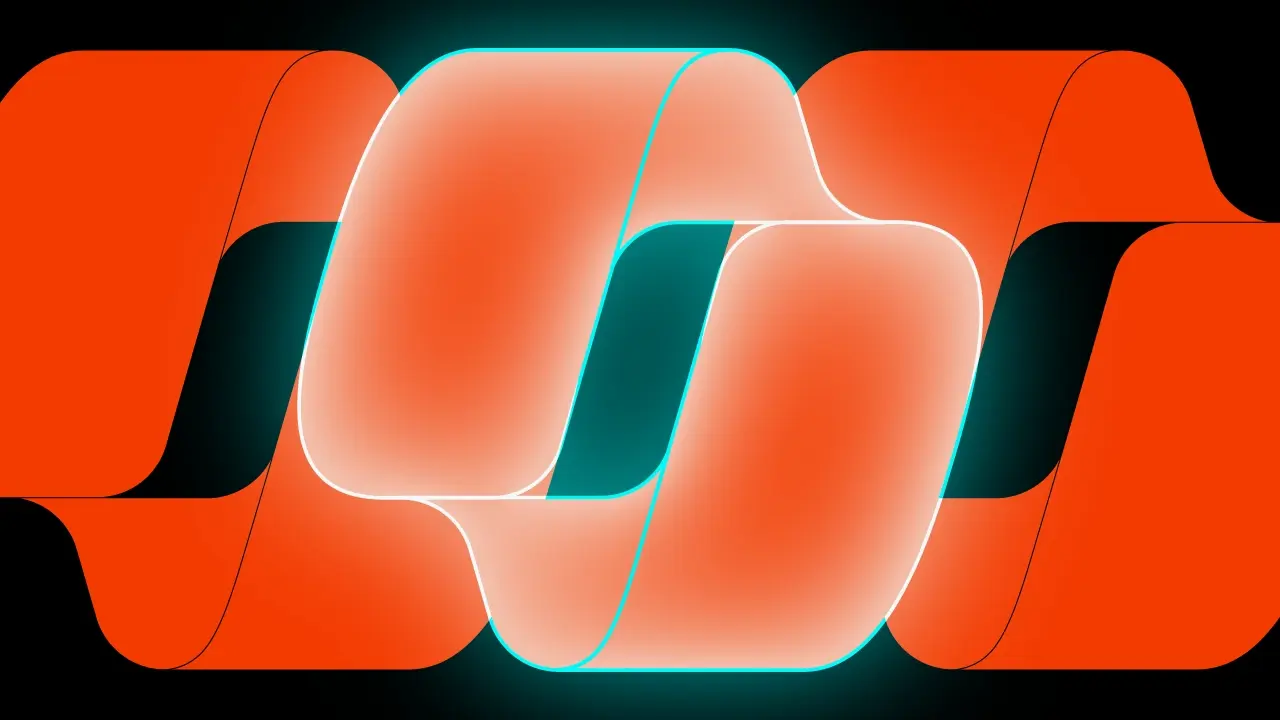#TeamSpeednet: Kacper, IT Admin


Kacper has been working in IT Administration at Speednet for over seven years. He told us about his typical workday and the challenges he faces daily. We also discussed cybersecurity, which is a crucial aspect of modern technology.
Hi Kacper, I’m glad you found a moment to talk with me! Let’s start with the most straightforward question. How long have you worked at Speednet, and how did you become an Administrator?
Kacper: I have worked at Speednet for over seven years (time flies…). While I was still in university, I was looking for a job in IT and came across a job posting that was perfect for me. Initially, I thought about a career as a programmer, but it turned out that I better fit the requirements for the IT Administrator position. I decided to give it a try, and it worked out. The job is challenging but also very satisfying. It requires a combination of knowledge in many areas and develops soft skills.
Sure, tell us about the responsibilities of an IT Administrator and what your typical workday looks like.
Kacper: As a team of Admins, we ensure everything works smoothly. We don’t have separate roles for system administrators, network, database, security administrators, or DevOps. We use and develop our strengths, specializing in a chosen direction. Together, we manage local, dedicated, and cloud infrastructure. We ensure the smooth functioning and updates of all company systems and tools. Of course, the core of the company is good collaboration with clients. We assist our developers in solving any issues with environments. For example, we set up necessary VPN connections, explain complex technicalities to clients, and deploy ready code to production. We also help in estimating new projects. Additionally, we are responsible for managing hardware and company licenses. With over 230 people on board, there’s always something to do.
A typical day starts with checking emails, messages, and the latest IT news. If someone reports any issues, we immediately address and resolve them. Each of us works on client projects and/or performs tasks necessary for the company’s operation, such as purchasing equipment, updating and modernizing critical infrastructure, conducting security audits, etc. In the meantime, we monitor to ensure everything functions properly and manage employee licenses and accounts.
If anyone thought, they would avoid contact with people – in line with the motto ‘I didn’t study computer science to work with people now’ – they are wrong. You need to work on your soft skills while also maintaining your specialization. Our entire department is practically available in the office daily, allowing us to consult easily and quickly with each other. It’s much faster to handle urgent matters on-site than remotely.
To avoid going crazy, I often go to the kitchen for coffee, where you can sometimes find a birthday or anniversary cake. Besides that, I keep myself in good form in bar sports (pool and foosball) and play ping pong – I even managed to win the SN championship title 😊
How has your role changed with the company’s growth and the increase in the number of employees since you joined Speednet?
Kacper: For a long time, I was the youngest IT Administrator in the company. When I joined, I was the third Admin, and about 80 people worked at Speednet then. As the company grew, so did the number of projects and problems [laughs], so we naturally needed more hands on deck. There are five of us, and I will reveal that we could use one more person on our team. Keep an eye on our job postings; we might open a recruitment for an administrative position soon.
There’s been a lot of talk lately about phishing and cybersecurity, and we’ve also had situations where someone impersonated our CEO. How often do such incidents occur, and what do you do to prevent them?
Kacper: Yes, this is a significant problem that we fight against daily. Educating employees about the methods used by scammers is crucial. Scammers don’t send these messages from our CEO’s phone or email, so it’s essential to thoroughly check the sources of messages and ensure they’re not attempts at impersonation. Fortunately, most people in our company have learned this and are vigilant. If they have doubts, they contact us and send us suspicious addresses to block. Occasionally, we conduct simulated phishing campaigns ourselves to test employees’ alertness. Many people can recognize them, and those who get fooled receive a reprimand [laughs]. Some time ago, we also implemented multi-factor authentication (MFA) in all our systems, which has significantly increased security in the company.
What are the biggest challenges related to the company’s IT security?
Kacper: IT security in any company is complex and focuses on several aspects. The first is access points to the Internet. Each access point is a potential gateway for a cyberattack, which requires constant monitoring and securing. I wouldn’t want to wake up to encrypted disks and ransomware to pay.
The foundation of security is continuous system updates. Regular updates ensure resilience against new threats and quickly patch security vulnerabilities. The more significant and publicized vulnerabilities are widely described on the Internet – they are imposing and sophisticated.
Another critical element is ensuring that every user has only the permissions they need to perform their job.
A significant challenge is that people unaware of the threats can inadvertently open the door for cybercriminals. Therefore, our employees’ continuous education, awareness, and training are crucial. This is why we co-create security policies and issue new recommendations to ensure the highest level of protection.
What tools does an Administrator use, which are your favorites, and why?
Kacper: It depends [laughs]. In projects, we often choose mature Open-Source solutions that we are familiar with. Preferably Cloud Native, unless the client decides otherwise. Thanks to containerization, we rarely say, “It works for me” [laughs]. To choose such tools, I recommend the website Cloud Native Landscape. I think sticking to Open-Source solutions is beneficial in the era of large corporations that want to “close” everything and sell subscriptions.
Additionally, it’s essential to know basic Unix tools, which are present in most system images. I look at a sad black window called the console daily, and on the other half of the screen, I have a browser where I search for problem solutions or browse documentation. Sometimes, I even ask ChatGPT for help.
I also often have to work with YAML files, which are configuration files. A text editor with syntax suggestion/correction is helpful, such as VSCodium with a plugin for checking YAML and Kubernetes syntax.
What do you like most about Speednet?
Kacper: The people and the atmosphere. Despite the many responsibilities, I can find a work-life balance. I can play pool, ping pong, or foosball in my free time and take a break from my daily tasks.
What is the best career advice you have ever received?
Kacper: It’s hard to say. As a newbie, I received a lot of advice from more experienced colleagues. One thing we agreed that none of us will ever fully master all the technologies we use because what we learn can quickly become outdated with updates. e know as much as we need to and read up on the rest.
We also concluded that what is written in IT books often needs to be updated by the time it’s published. Certifications help familiarize you with a tool but are optional. A lot can change from version to version, so reading the documentation and blogs related to the tool or system you’re interested in is best.
It’s also not worth sitting and trying to solve problems late into the evening. Tomorrow is another day. Often, the solution comes to mind over a morning coffee. Rest is just as important as work, and we usually push it to the back burner.
You met your wife at work. Are there any pros and cons to working in the same company as your life partner?
Kacper: There are always some pros and cons [laughs]. We agreed that we shouldn’t work together on the same project to maintain a healthy balance in our relationship. However, having lunch together at work or going on team-building trips is nice. It’s important to remember that during work hours, professionalism matters, and we need to focus on our tasks.
Will the development of AI have a significant impact on your work? Do you see any opportunities or threats associated with it?
Kacper: Regarding problem-solving, ChatGPT does well with the simpler ones. With the more complex ones, it is a little worse, but it can guide you to the source of the problem. For now, we can use AI tools to assist us, but the entire responsibility still lies with us—that’s the nature of the job. For example, we can’t unthinkingly deploy code suggested by AI.
Regarding security, it’s essential to be aware that both sides of the conflict use AI tools. AI-supported IDS/IPS systems already detect and prevent threats in corporate networks.
Similarly, the other side uses artificial intelligence to increase the chances of breaking in and causing damage. As a result, the fight between both sides is becoming more complex, and the application of AI presents both a challenge and an opportunity for cybersecurity.
Therefore, the future of cybersecurity work will increasingly depend on the ability to adapt and use AI to protect against attacks. Specialists in this field must have technical knowledge and constantly follow AI trends and innovations to protect their organizations effectively.




